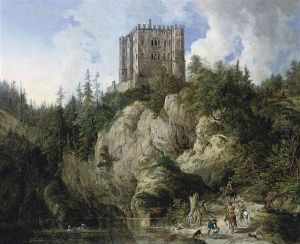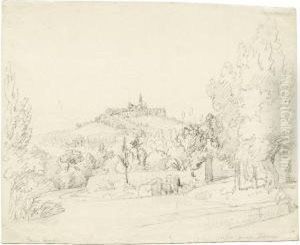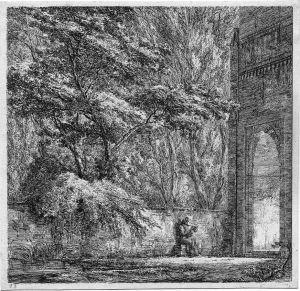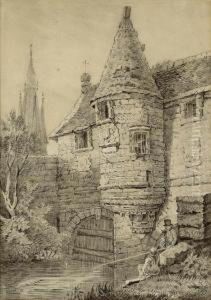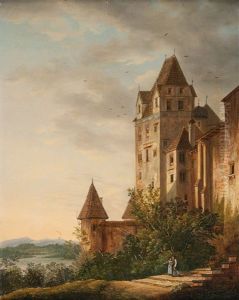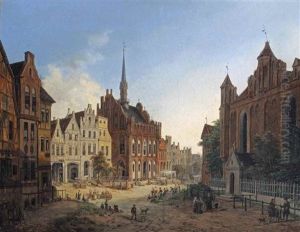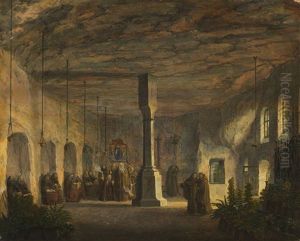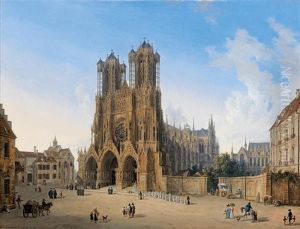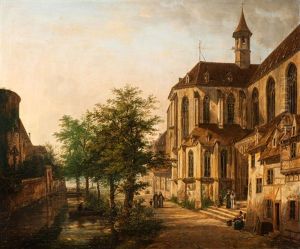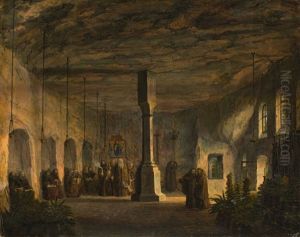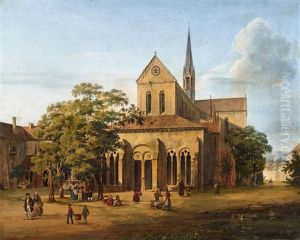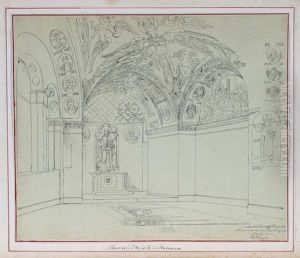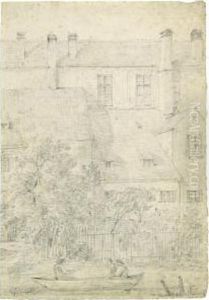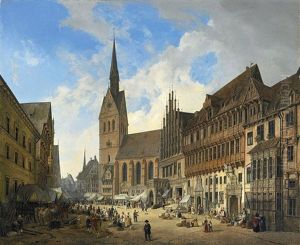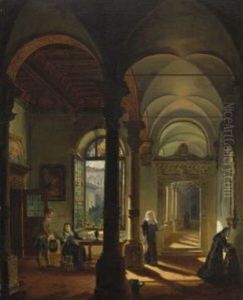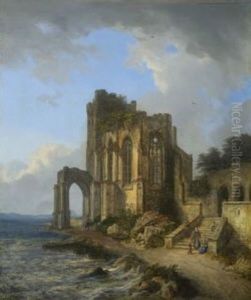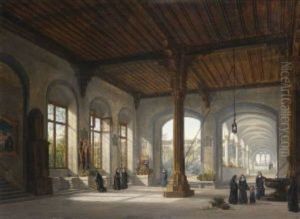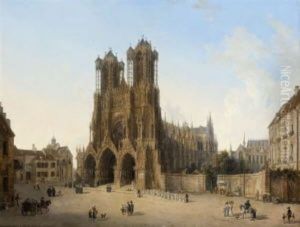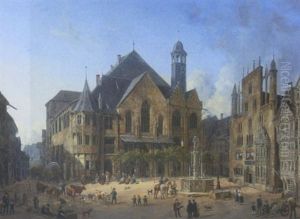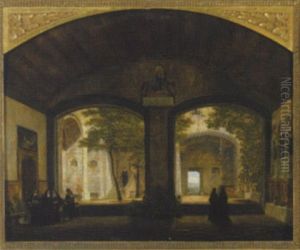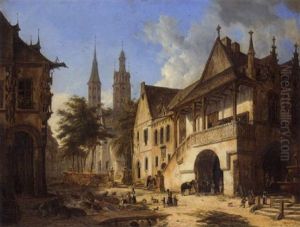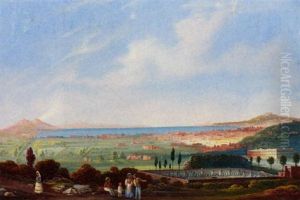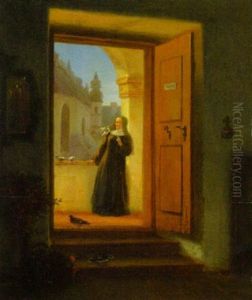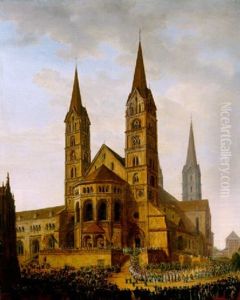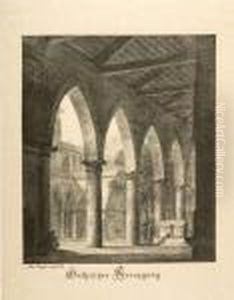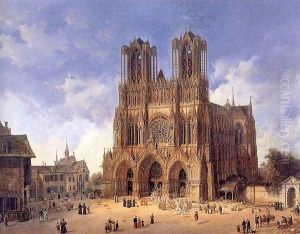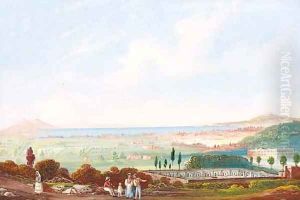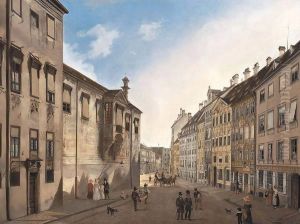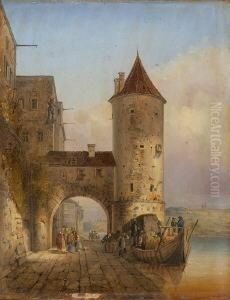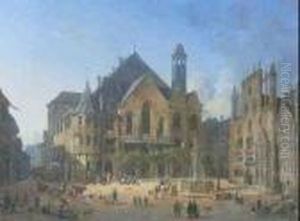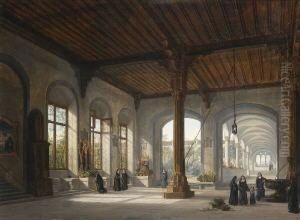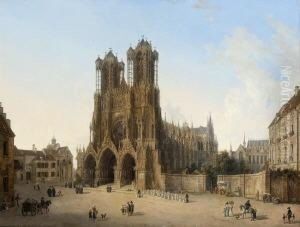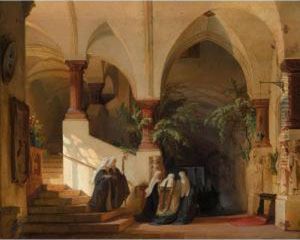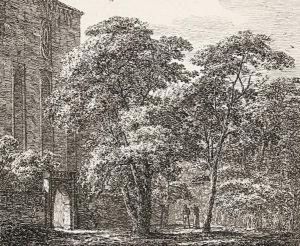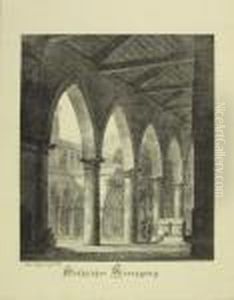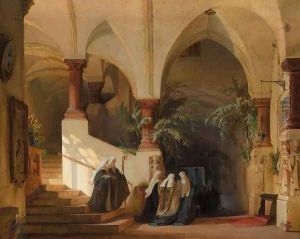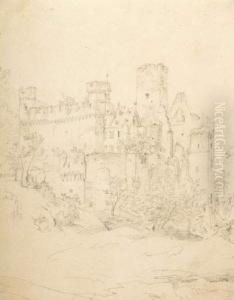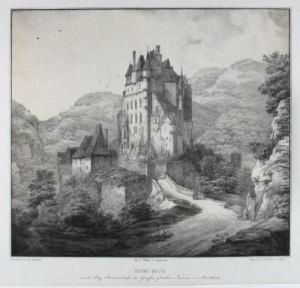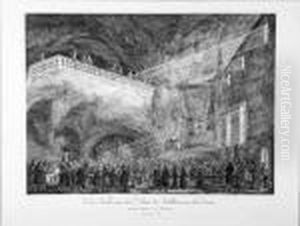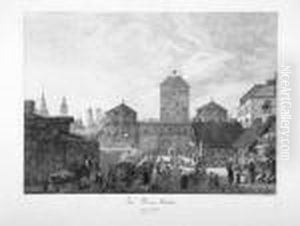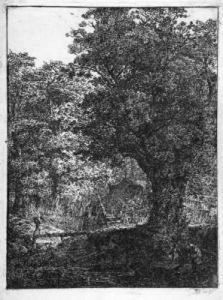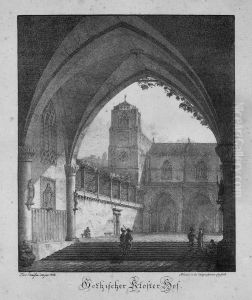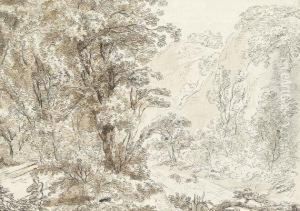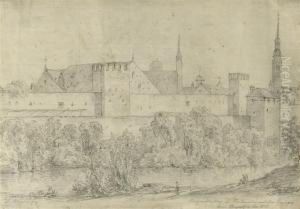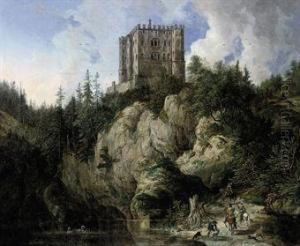Domenico II Quaglio Paintings
Domenico Quaglio the Younger, also known as Domenico II Quaglio, was an influential Italian painter, architect, and stage designer, born in 1792 in Munich, Germany. He hailed from the Quaglio family, a dynasty of Italian artists and architects who were active in Germany from the late 17th to the 19th century. Domenico II was the son of Giuseppe Quaglio and thus part of a lineage that significantly impacted the artistic landscape of their time, especially in the realms of scenic design and architecture. The Quaglio family's legacy is often associated with the German Romantic movement, and Domenico II's contributions were pivotal in blending Italian artistic traditions with German Romantic sensibilities.
Domenico II Quaglio is particularly renowned for his detailed architectural paintings and his role in the development of the German Romantic style of landscape and architectural painting. He had a profound interest in historical accuracy and was celebrated for his ability to imbue his architectural depictions with a sense of atmospheric depth and emotional resonance. His works often featured medieval and Gothic structures, castles, and churches, rendered with meticulous attention to detail and a keen eye for the interplay of light and shadow, which became a hallmark of his style.
Throughout his career, Quaglio also engaged in stage design, contributing to the visual spectacle of theatre in Germany. His innovative set designs were praised for their imaginative qualities and their enhancement of the theatrical experience. These contributions further solidified his reputation as a versatile artist capable of crossing boundaries between different artistic disciplines.
Domenico II Quaglio's artistic journey was cut short when he died in 1837, at the relatively young age of 45. Despite his premature death, his legacy persisted through his influential works and the continuation of the Quaglio family's artistic tradition. Today, Domenico II Quaglio is remembered as a key figure in the German Romantic movement, whose architectural paintings and stage designs continue to be admired for their beauty, precision, and emotional depth.
